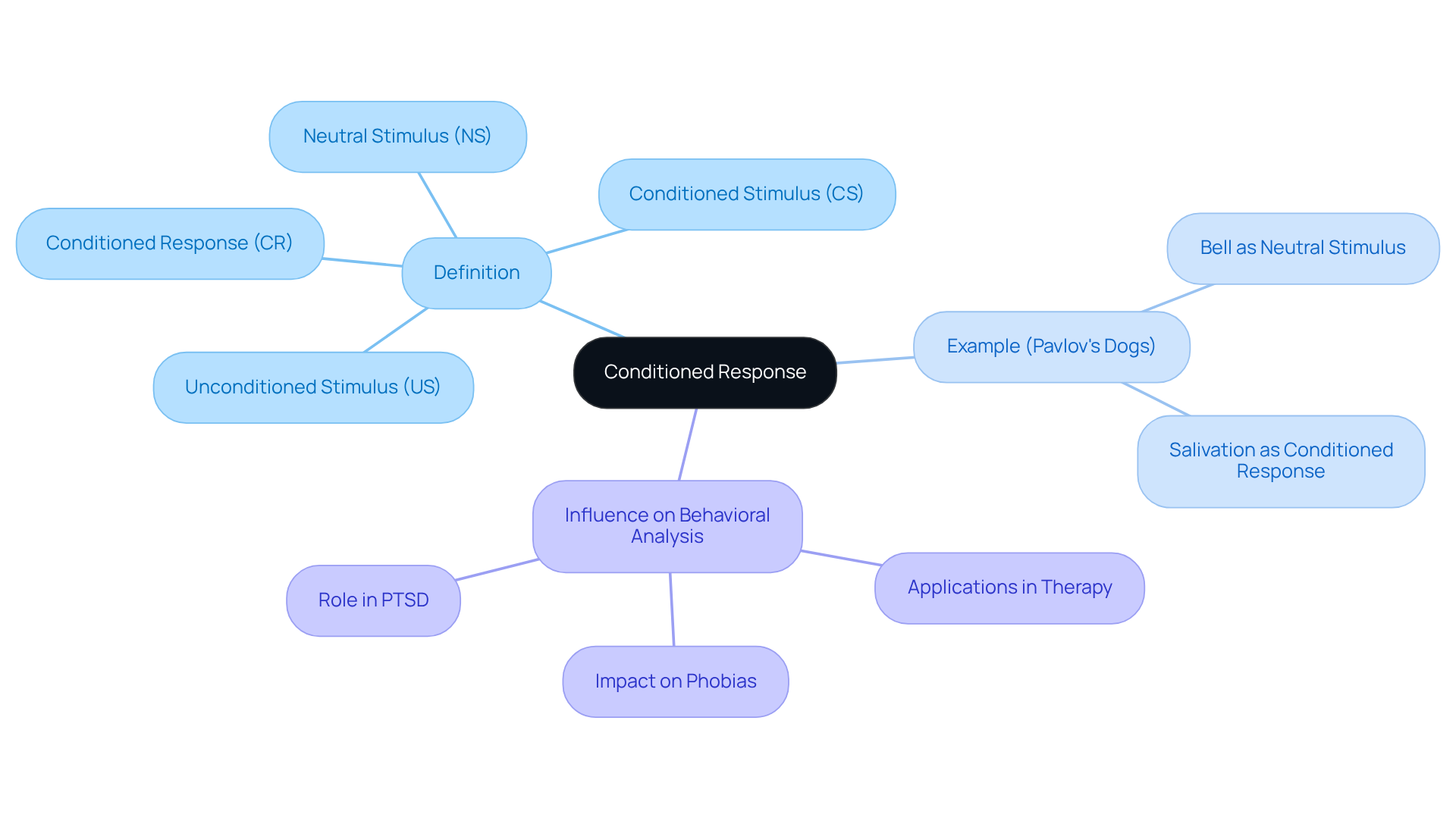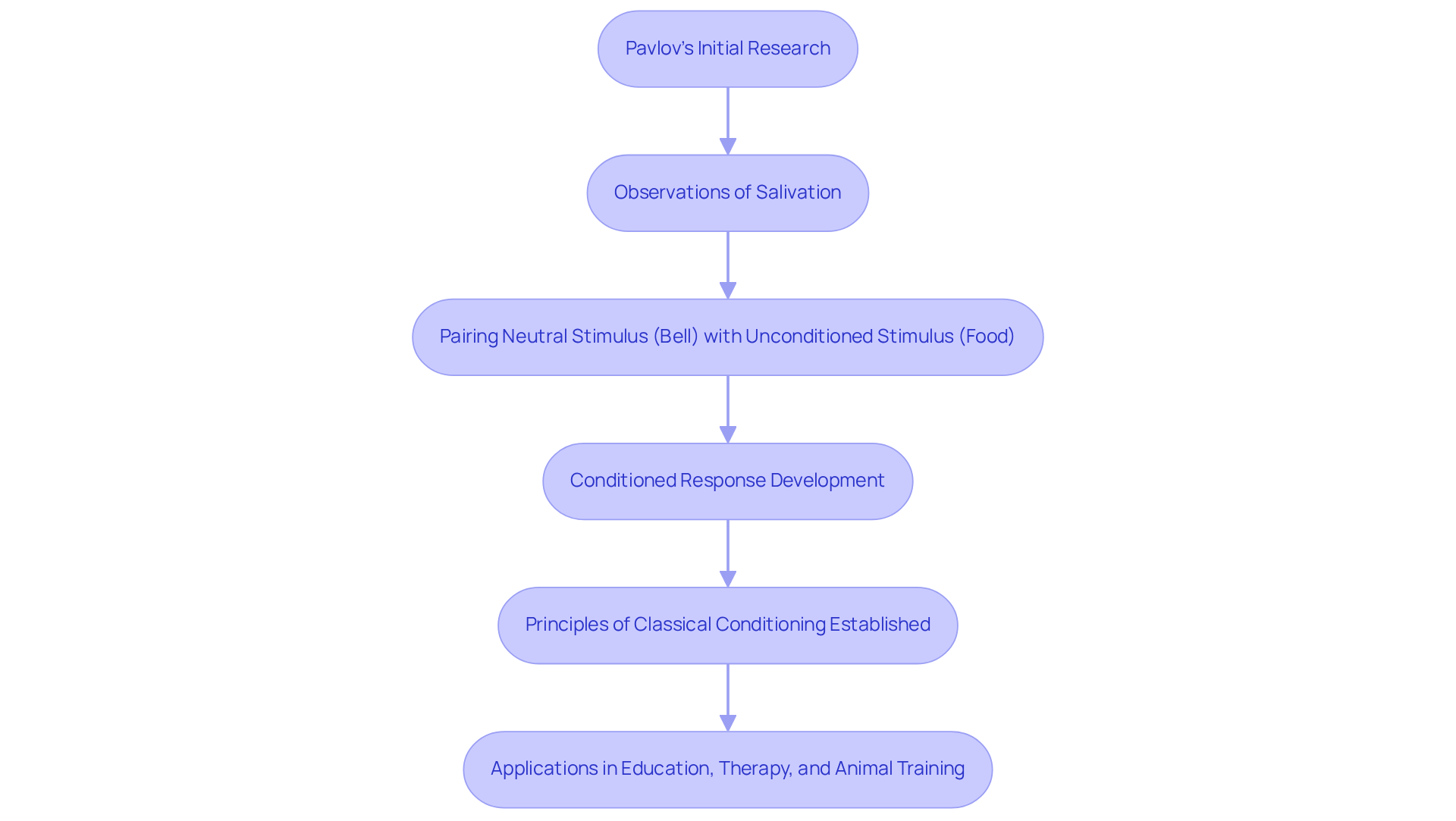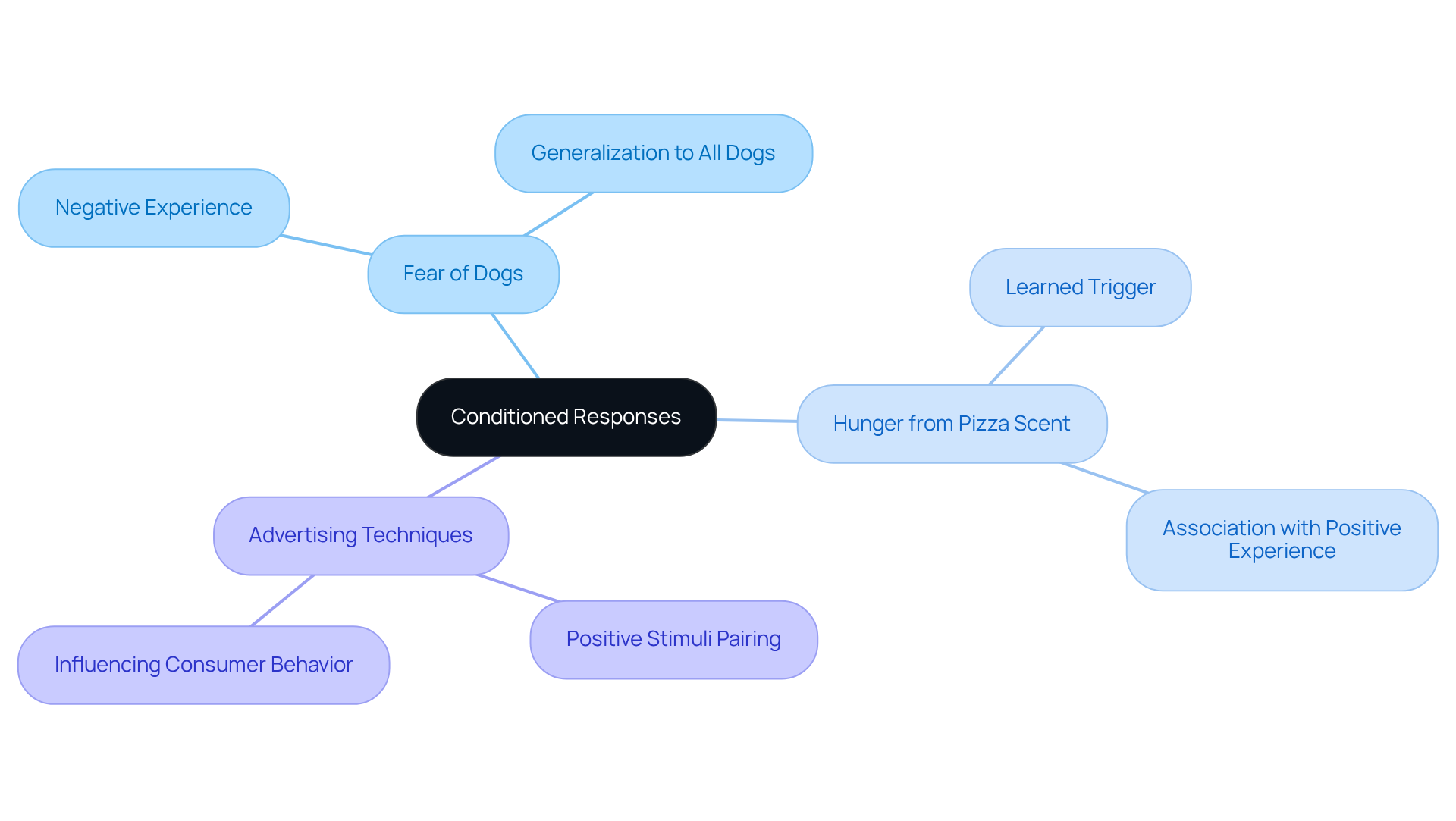September 24, 2025

A conditioned response represents a learned reaction to a previously neutral stimulus that has been paired with an unconditioned stimulus, resulting in a specific response. This phenomenon, as evidenced by Pavlov's experiments with dogs, illustrates the profound impact of learned associations on behavior.
For instance, consider how a dog learns to salivate at the sound of a bell; this example not only demonstrates the mechanics of conditioning but also highlights its broader implications.
The concept extends into various fields, including therapy and advertising, where understanding these learned associations can significantly influence outcomes. This powerful influence underscores the necessity of recognizing conditioned responses in behavioral contexts.
Understanding the nuances of behavior is a captivating endeavor, particularly when exploring the concept of conditioned responses. This psychological phenomenon, rooted in the groundbreaking work of Ivan Pavlov, reveals how neutral stimuli can evolve into powerful triggers for learned reactions. As individuals navigate their environments, they frequently encounter scenarios that underscore these conditioned responses—ranging from the instinctive fear of dogs after a bite to the mouthwatering anticipation elicited by the scent of pizza.
How do these learned behaviors influence everyday decisions and emotional reactions? Furthermore, what ethical considerations emerge from their application in fields like advertising?
What is a conditioned response? It is a learned reaction to a previously neutral stimulus that has been paired with an unconditioned stimulus (US) to elicit a response. This concept is , which explains what is a conditioned response, a learning process initially articulated by Ivan Pavlov.
Consider the classic experiments where dogs learned to salivate at the sound of a bell, consistently paired with food. The bell, initially a neutral stimulus, evolved into a stimulus that illustrates what is a conditioned response, provoking the learned reaction of salivation.
How does this understanding of conditioned responses influence your approach to behavioral analysis?

The concept of conditioned reactions originated from the pioneering research of Russian physiologist Ivan Pavlov in the early 20th century. Initially investigating the digestive systems of dogs, Pavlov observed that they salivated not only upon the presentation of food but also at the sound of the lab assistant's footsteps. This observation led to a series of experiments aimed at exploring what is a conditioned response by pairing a , such as the sound of a bell, with an unconditioned stimulus (food). Over time, the dogs learned what is a conditioned response by associating the sound of the bell with food, which resulted in salivation triggered solely by that sound.
This groundbreaking research established the foundation for behavioral psychology and introduced the principles of classical conditioning, which have since found applications in various fields, including education, therapy, and animal training. Remarkably, interventions based on classical conditioning principles can achieve a success rate ranging from 50% to 70%, underscoring their effectiveness in therapeutic contexts. Furthermore, Pavlov's findings highlight the importance of understanding how learned associations shape behavior, a concept that remains central to contemporary psychological practices.
As Pavlov himself noted, "Initially, the dogs only salivated when the food was directly presented," illustrating the transformative nature of conditioned behaviors. Additionally, concepts such as generalization and discrimination are crucial for understanding how these learned behaviors can be applied in modern ABA therapy, making Pavlov's contributions highly relevant for healthcare employers today.

In various everyday situations, a conditioned response manifests as conditioned reactions, underscoring their considerable impact on behavior. For example, an individual bitten by a dog may develop an aversion to all dogs, irrespective of their temperament. This reaction exemplifies what is a , illustrating how a previously neutral stimulus, in this case, dogs, becomes associated with a negative experience, resulting in a learned response of fear. Similarly, the scent of pizza can evoke feelings of hunger; here, the aroma acts as the learned trigger, inciting the learned reaction of appetite.
In advertising, brands strategically link their products with positive stimuli—such as uplifting music or appealing visuals—to elicit a learned response of desire or joy. As noted, "marketing professionals often use respondent conditioning techniques to influence consumer behavior by pairing products with positive emotions or other desirable stimuli." This method effectively shapes consumer preferences, fostering emotional connections that can drive purchasing decisions.
These examples illuminate the pervasive role of learned behaviors in shaping actions and emotional responses across diverse contexts. Moreover, it is crucial to consider the ethical implications of employing such techniques in advertising, particularly for vulnerable populations, who may be more susceptible to what is a conditioned response.

A conditioned response stands as a pivotal concept in psychology, illustrating how learned behaviors arise from the pairing of neutral stimuli with unconditioned stimuli. This foundational idea, rooted in the pioneering work of Ivan Pavlov, unveils the intricate ways experiences shape reactions. By grasping conditioned responses, individuals can gain profound insights into behavioral patterns, both in themselves and in others.
Key points throughout the article emphasize:
Real-life examples, ranging from the development of fears to the influence on consumer behavior, highlight the pervasive impact of these learned reactions in everyday life. Moreover, the significance of ethical considerations in employing such techniques underscores the necessity for responsible application in practice.
Ultimately, recognizing the power of conditioned responses opens avenues for deeper understanding and reflection on human behavior. Whether in psychology, education, or marketing, the implications of learned associations are profound. Embracing this knowledge fosters a more nuanced approach to behavior analysis, enhancing awareness of how experiences shape responses and informing strategies for positive change.
What is a conditioned response in psychology?
A conditioned response is a learned reaction to a previously neutral stimulus that has been paired with an unconditioned stimulus (US) to elicit a response.
Who initially articulated the concept of conditioned response?
The concept of conditioned response was initially articulated by Ivan Pavlov.
Can you provide an example of a conditioned response?
An example of a conditioned response is demonstrated in Pavlov's experiments, where dogs learned to salivate at the sound of a bell that was consistently paired with food.
What role does a neutral stimulus play in conditioned responses?
A neutral stimulus, when paired with an unconditioned stimulus, evolves into a conditioned stimulus that elicits a learned reaction, such as salivation in Pavlov's dogs.
How does understanding conditioned responses influence behavioral analysis?
Understanding conditioned responses can influence behavioral analysis by providing insights into how behaviors are learned and how stimuli can affect reactions.
Our expert recruitment strategies and AI-driven sourcing ensure that you receive top-notch candidates quickly, without compromising on quality. Whether you’re looking for BCBAs, Clinical Directors, or RBTs, we’ve got you covered.